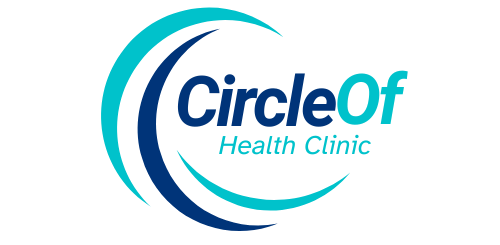Have you ever clicked on an article hoping to learn something new, only to close the tab because it felt like a snooze fest? You’re not alone.
Capturing attention while educating readers is an art, especially when tackling topics as vital as wellness.
But the good news is, you don’t have to sacrifice engagement for accuracy. Let’s explore how to make your content informative, accessible, and, yes, even entertaining.
Key Points:
- Start strong with an engaging question or fact.
- Know your audience and adapt your tone to their preferences.
- Use storytelling, humor, and relatable examples to explain concepts.
- Prioritize credible sources and verify every claim.
- Vary the structure to hold attention—mix text, lists, and subheadings.
Hook Readers Right from the Start

The introduction is your chance to set the tone. Don’t waste it on fluff. An eye-opening fact or a relatable question makes readers pause and think, “I need to know more.” Did you know that 60% of people stop reading online articles after just a few seconds? That’s your competition—attention spans, not other writers.
A strong opening frames the problem or curiosity in a way that the reader can’t ignore. Whether it’s a jaw-dropping statistic about wellness habits or a relatable anecdote about someone’s daily struggle with energy levels, the introduction should make readers lean in.
Tailor Your Content to Audience Expectations
To educate effectively, know who you’re talking to. Are they professionals looking for in-depth analysis, or everyday readers seeking actionable advice? Tailoring your language and examples to match your audience makes all the difference.
For instance, a topic like stress management could focus on quick, practical techniques for busy parents or explore workplace strategies for executives. Both are valuable but require a different tone, vocabulary, and examples.
It’s also helpful to address common pain points. Instead of writing generically, identify challenges your audience faces. Are they trying to improve sleep? Understand meal planning? Target your message to solve their specific problems.
Simplify Without Losing Depth

Complex ideas don’t have to feel overwhelming. Break them into digestible pieces. Analogies work wonders here. Think of cholesterol as a traffic jam in your arteries. Visual, relatable comparisons make technical concepts stick.
You can also refine your phrasing by using tools like the paraphrasing tool offered by ZeroGPT. It can help reformulate ideas while maintaining accuracy, so your explanations resonate with readers.
Avoid overloading your reader with too much information at once. Focus on one idea per section and provide examples or context that make it easier to understand. For example, instead of explaining how antioxidants work in general, highlight how blueberries or green tea support cellular repair.
Blend Facts with Conversational Style
Trust is built on credible information, but no one wants to read something that feels like a textbook. Blend well-researched facts with a conversational tone.
Instead of saying, “Vitamin D deficiency has a significant prevalence in the population,” say, “A surprising number of people don’t get enough Vitamin D, and it’s quietly wreaking havoc on their health.”
Stories also help bring facts to life. If you’re explaining the benefits of mindfulness, share a relatable example of someone who started practicing it during their lunch break and saw noticeable improvements in focus and energy.
Craft Headlines and Subheadings That Promise Value
Headlines act like signposts, guiding readers through your content. Each subheading should give readers a clear idea of what’s coming next while promising value.
For instance:
- “The One Thing You’re Missing for Better Sleep” is more engaging than “Sleep Tips.”
- “Quick Fixes to Reduce Stress Now” grabs attention better than “Stress Management Strategies.”
Strong subheadings help skimmers find what they’re looking for, keeping them engaged longer. Use action words, specific benefits, or even intriguing questions to keep curiosity alive.
Vary the Structure to Keep It Fresh

A wall of text is the quickest way to lose readers. Break your article into smaller sections with clear headings. Use bullet points and numbered lists to highlight key takeaways or action steps. Readers skim—help them find what matters.
But don’t overuse lists. Strike a balance between short paragraphs, detailed explanations, and occasional visuals like infographics or charts. Variety keeps readers engaged and prevents monotony.
Steps to Create a Balanced Weekly Plan
When discussing meal planning, for example, make the process actionable.
- Choose meals with a mix of protein, fiber, and healthy fats.
- Prep ingredients ahead of time to save effort during the week.
- Incorporate leftovers into new dishes to reduce waste.
Fun Fact: Did you know meal prepping can save up to five hours weekly compared to daily cooking?
Connect Through Relatable Stories
Nothing connects like real-life examples. Share a case study or anecdote to illustrate your point. For instance:
When explaining the importance of hydration, say:
“A reader shared how simply drinking two more glasses of water daily helped her migraines disappear. It’s a small habit, but it completely transformed her quality of life.”
Stories humanize the information, making it easier for readers to see themselves in similar scenarios.
Provide Actionable Takeaways in Every Section

Every section should leave readers with something practical they can implement. The goal is to empower them, not just inform them. If you’re discussing stress relief techniques, end with a suggestion like:
“Next time you feel overwhelmed, try the 4-7-8 breathing method—it’s a simple way to calm your nerves in less than a minute.”
Even small actions make readers feel they’ve gained something valuable.
Use Visuals to Strengthen Your Message
Graphs, charts, and infographics can make data-heavy sections more engaging. If you’re explaining how hydration impacts energy, include a simple chart showing daily water intake recommendations.
If you don’t have design skills, don’t worry—tools like Canva make creating visuals easy and user-friendly. Visuals can also break up text, giving the reader’s eyes a break while reinforcing key ideas.
Write for Skimmers but Reward Readers Who Stay
Most readers skim online content, but that doesn’t mean you should ignore the ones who stick around. Use bold text, key phrases, and concise bullet points for skimmers, but dive deeper in the body paragraphs for those who read thoroughly.
Don’t Forget to Ask for Reader Interaction
Engagement isn’t just about delivering information—it’s about creating a conversation. Ask readers to share their thoughts, comment on your advice, or even submit their questions.
For instance: “What’s your go-to strategy for staying healthy on busy days? Share it in the comments—we’d love to hear your tips!”
This not only builds community but also gives you insights into what your audience wants to read next.
By following these strategies, you can create educational content that doesn’t just inform but also connects with your readers. When your writing feels like a conversation rather than a lecture, it transforms the way people learn. Try it—you might even enjoy the process more yourself.

